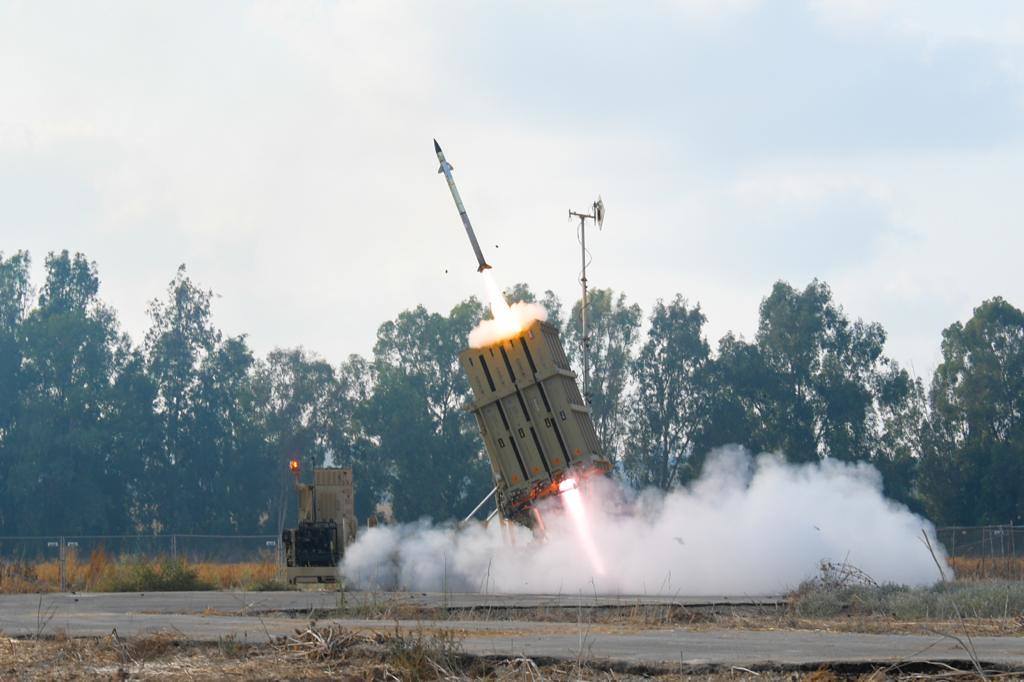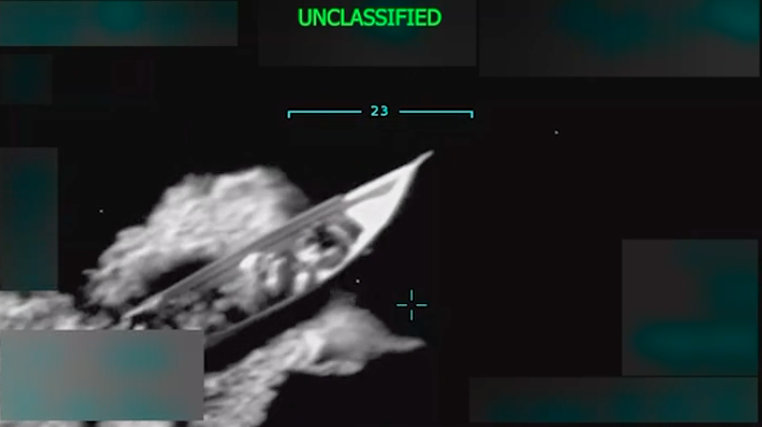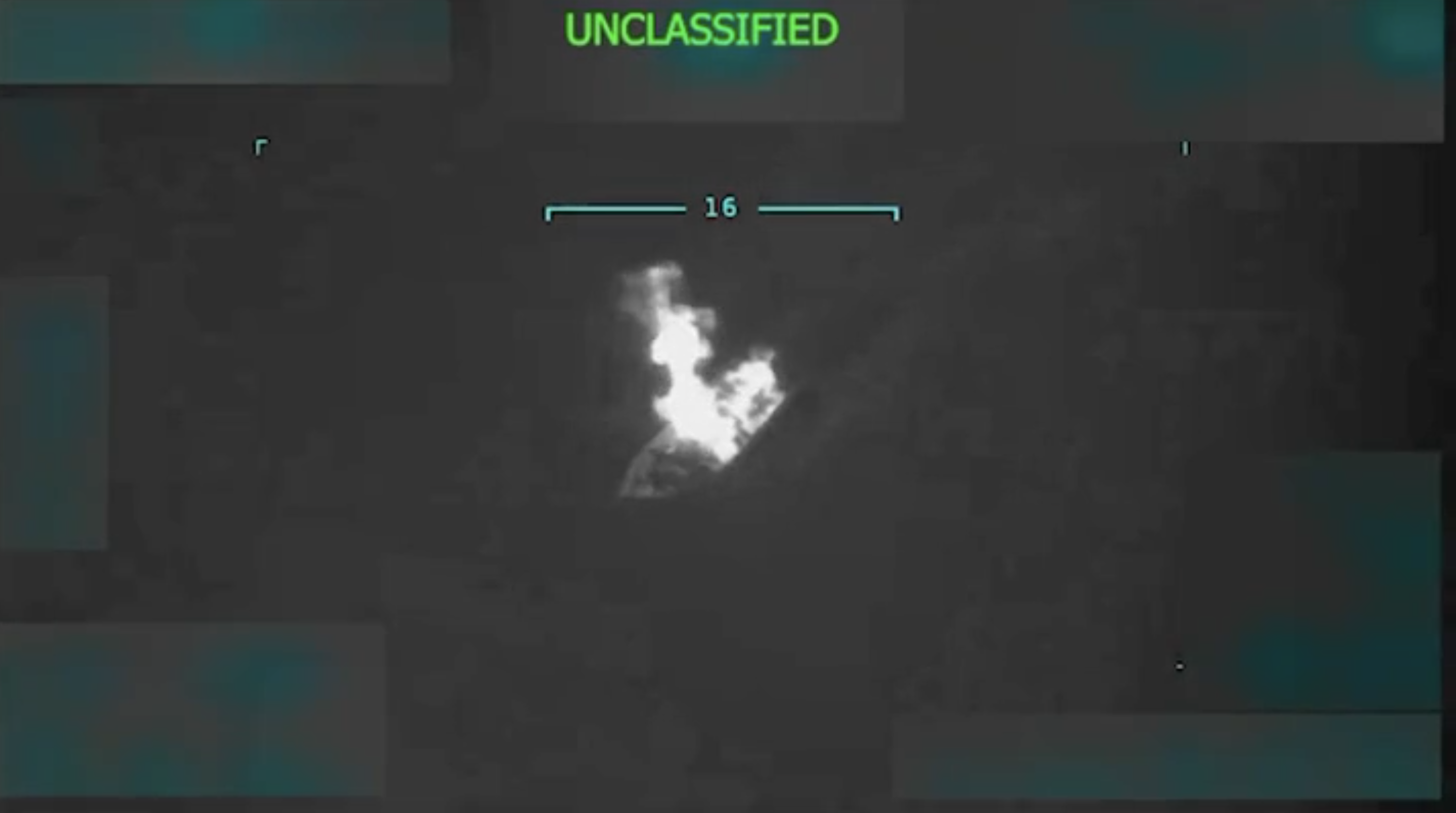Missile Defense in the Israel-Hamas War
Israel battles unprecedented missile threats, and U.S. and Israeli systems have defended against them. Missile defense saves lives and may prevent broader war.

As tensions continue to rise in the Israel-Hamas war, the missile defense fight since Oct. 7 may provide a window into the broader implications of the war. Hamas rocket fire and Israeli Iron Dome engagement have been key features of this conflict. While Hamas rockets have come in much greater volume than in recent skirmishes, this type of action and response is largely typical for Hamas and the Israeli Defense Forces (IDF). Far less typical, however, has been the integrated engagement by Israel’s other missile defense systems, including Arrow and David’s Sling. These missile defense systems have never before been used synchronously.
The Pentagon has meanwhile taken note of rising missile threats in the region. Supplementary American missile defense has been the U.S. military’s most heavily used tool for intervention in the conflict thus far. The Israeli and American use and deployment of missile defense systems since Oct. 7 indicate rightful and mounting concern of wider and more costly warfare. Integrated air and missile defense technology has limited civilian casualties and reduced the possibility of direct conflict between the United States and Iran, and it will continue to do so.
The Missile Defense Battle Since Oct. 7
Hamas and other militant groups in Gaza have regularly fired rockets into Israeli civilian population centers since 2001. This tactic prompted the development of Israel’s Iron Dome technology, which is a mobile missile defense system designed specifically to intercept short-range, low-altitude rockets, artillery, and mortars. Like other Israeli and American land-based missile defense systems, Iron Dome uses a radar to track incoming projectiles and cues a set of launchers to fire surface-to-air missiles that intercept these threats before they can strike populated areas. As of 2021, Israel had 10 Iron Dome batteries with overlapping sectors of coverage to defend against indirect fire, primarily from Iranian proxies, including Hamas in Gaza and Hezbollah in southern Lebanon.
Iron Dome has been highly effective in past conflicts, intercepting an estimated 90 percent of incoming threats in recent years, though the IDF has not yet published its Iron Dome interception rates in the ongoing battle. Because of the regularity of rocket threats from Gaza, IDF system operators are highly practiced against Hamas’s usual attacks. However, the quantity of low-altitude projectiles in October and November was far greater than the typical load that Iron Dome and its operators have faced. In just the first five weeks after the Oct. 7 attack, the IDF shot down approximately 9,500 rockets across its air defense systems, most of which originated from Hamas. This figure totals more than in any war since Hamas took control of Gaza in 2007. In a 20-minute span on the first day of fighting in October, the IDF saw between 2,200 and more than 3,000 Hamas rockets fired into population centers. This volume of rockets alone was unprecedented and prompted some commentators to worry that mass barrages may overwhelm the Iron Dome system. Still, rocket volleys and interceptions by Iron Dome are an unfortunately routine part of Hamas and IDF operations.
The threat of rocket attack from Gaza is only a small part of the danger that Israel may face if tensions rise in the Middle East. Both the integrated use of Israel’s lesser-known missile defense systems and the involvement of U.S. missile defense assets have made this conflict anomalous.
In addition to the torrent of rockets from Iranian-backed Hamas since Oct. 7, Israel also continues to face the possibility of large-scale attack by Iran and its other auxiliaries. Iran funds Hezbollah, which operates to Israel’s north, as well as the Yemen-based Houthis to its south. These groups each have a history of missile attacks on Israel and Saudi Arabia, respectively, and a well-stocked arsenal of offensive missile capabilities that far exceed Hamas’s known assets. Hezbollah and the Houthis have each been actively engaged in this conflict, and their threat is far more sophisticated than those that the IDF faces on a regular basis. Among other weapons, each group possesses advanced precision-guided missiles and drones capable of dropping deadly payloads. Israel’s integrated multitiered missile defense infrastructure has performed well against highly unusual attacks from these groups in the current war.
Iron Dome is by far Israel’s most used missile defense system, but it is only one component of the IDF’s integrated multitiered system. Iron Dome defends against short-range threats up to about 50 kilometers away, while David’s Sling covers medium-range projectiles, and Arrow takes down longer-range ballistic missile threats. Israel also possesses American Patriot missile technology, operated by the Israeli Air Force. Each of these systems uses ground-to-air missile defense capabilities, incorporating a radar with connected shooters to intercept incoming threats. Israel’s integrated and layered system is arguably the most advanced in the world. As the IDF has faced unprecedented missile threats since Oct. 7, virtually its entire missile defense infrastructure may continue to be employed.
Iron Dome has persistently shot down short-range rockets, artillery, and mortars from both Hamas and Hezbollah, but this war is unique in that the IDF has relied on every tier in its defense system. Arrow is the highest level of Israel’s missile defense shield, and in this conflict, it made a historic wartime debut against a long-range ballistic missile headed toward Israel from the Houthis in western Yemen, and the IDF has continued to use Arrow to counter multiple longer-range threats. David’s Sling made a similarly historic entry into the war and has worked alongside Iron Dome to counter Hamas rocket fire. While David’s Sling has been operational since 2016, its first intercepts occurred in May of this year. In the first week of fighting, unconfirmed local media reports and footage shared online also showed a Patriot missile launch to the north against what was later said to be a false alarm. These systems are operating in tandem for the first time.
Missile defense in the current conflict has not been limited to Israeli systems. American assets have also engaged threats headed toward Israel. In mid-October, U.S. Navy destroyer USS Carney shot down three land attack missiles and eight drones launched by the Houthis from western Yemen in Israel’s direction. U.S. naval forces continue to battle in the Red Sea, as they responded to additional Houthi ballistic missile attacks on Nov. 27 and Dec. 3. Land-based American troops also engaged drone attacks on U.S. facilities in Syria and Iraq on Oct. 18. While Secretary of Defense Lloyd Austin has claimed that counterattacks against Iran-linked sites in Syria were “separate and distinct” from the Israel-Hamas conflict, it is clear that the Pentagon fears wider war in the region.
Deterrents to Larger-Scale Conflict
As the IDF has continued to focus on its ground offensive in Gaza, Hezbollah and the Houthis’ possible use of advanced precision-guided missiles against Israeli civilians has maintained the potential to rope the IDF into a much broader multifront war. This possibility, along with the continued targeting of U.S. bases in the region, could lead to unwanted war between major world powers. Integrated missile defense systems are capable of both protecting civilian population centers and deterring adversaries from engaging in broader conflict.
Hezbollah’s arsenal includes roughly 150,000 offensive rockets and missiles, including ballistic missiles, cruise missiles, and drones. Its weapons have been employed to a limited degree since Oct. 7, but in full force they could be catastrophic. Direct conflict with Iran would be equally or more catastrophic for Israel but would likely trigger American intervention that Iran ostensibly fears. Iran has a highly sophisticated stockpile of short-, medium-, and long-range missiles capable of delivering nuclear warheads to Israel and beyond. Its program poses a threat to both Israel and other American allies, as Iran has sent weapons to support Vladimir Putin’s war in Ukraine.
In response to rising threats from Iranian proxies, Washington has reinforced Israel’s missile defense structures. Since Oct. 21, the United States has sent two Iron Dome batteries, along with additional interceptors to allow for reload. In addition, President Biden has deployed additional Patriot battalions of roughly 700 American troops each and a Terminal High Altitude Area Defense (THAAD) battery to the region. These moves are quite rare. THAAD is one of the most advanced missile defense systems in the world and is the highest-range air defense system operated by the U.S. Army. The United States has deployed THAAD only a handful of times, including in a training exercise to Israel in 2019. The U.S. also deployed THAAD to South Korea in 2017 in a move that sparked outrage from the Chinese government. Last year, THAAD made its first combat interception against a Houthi missile bound for the United Arab Emirates (UAE) from Yemen. Since it rolled out THAAD, the Pentagon has deployed the system in very limited circumstances, and in the current conflict, it appears likely that the Biden administration hopes to deter Iran from direct engagement.
Iran has been wary of direct conflict with the United States in recent years. In 2019, when then-President Trump ordered the assassination of Iranian Revolutionary Guards Corps-Quds Force Commander Qassem Soleimani, Iran pledged “forceful revenge,” but no major escalation occurred. Since then, Iran has sent weapons to its proxies and to Russia to fight against American interests, but it has not directly engaged in such hostilities. However, the Biden administration is right to be concerned about Tehran’s rising aggression in the Middle East. Iran is likely to continue its proxy war with the United States, but with increasing Russian and Chinese involvement, Iranian leaders may be emboldened to join the fight more directly. Sending American missile defense capabilities not only protects civilians but also signals to Iran that its escalation could inspire further American intervention.
The Future of This Fight
Whether or not the current conflict in Israel and Gaza escalates to an even broader war, it has highlighted an increasing need for missile defense technology in protecting civilian life and deterring large-scale offensive attacks. Both the United States and Israel continue to develop their anti-missile capabilities, including through projects to advance laser technology and integrate American missile defense systems.
Israel has developed laser missile defense technology known as Iron Beam but has yet to operationalize the equipment. A single Iron Dome interception costs the Israeli government tens of thousands of dollars to shoot down often garage-built rockets worth only a few hundred dollars. In contrast, Iron Beam would cost an estimated $3.50 per interception. The United States has worked to develop similar technology in recent years, but the systems have not yet been used in operational environments.
Perhaps the most stunning feature of Israel’s current fight has been the integrated and coordinated use of multiple levels of missile defense technology. The United States has previously employed multiple missile defense systems harmoniously, like in its THAAD-Patriot engagement in UAE last year. However, no U.S. engagements have neared the scale and consistency of Israel’s proven capabilities since Oct. 7. Since Russia’s aggressive use of missiles in Ukraine, the United States and its NATO allies have continued efforts to improve their integrated air and missile defense (IAMD) systems. IAMD connects all available radars and shooters to a central command system and coordinates for the most efficient and effective shooter to engage aerial threats from any radar’s feed. The United States has been focused on IAMD system development for several years, and perhaps Israel’s demonstration will motivate further U.S. efforts and investment.
The future of the war in Israel and neighboring territories is uncertain, but missile defense remains a central focus for both Israel and the United States. The effective use of both Israeli and American systems has the potential to deter catastrophic war that would lead to widespread instability in the region. In addition to the strategic importance of missile defense in the current conflict, the integration and effective use of missile defense technology protects the most precious asset: civilian life.




